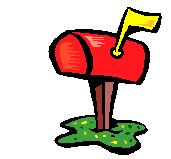Chapter 16
Useful Additives
If you are feeding mostly raw meaty bones to your dog and not much else as so many people do, then it is essential that you supply two supplements on a regular basis. One of these is breyers yeast and the other is kelp.
BREWER’S YEAST
- The overriding reason this is added to your dog’s diet is as a source of the B complex group of vitamins.
What is brewer’s yearst ? For a start, and this is important, it is not baker’s yeast. Baker’s yeast is living yeast. The one you use to make bread rise. Baker’s yeast will deprive your dog of b vitamins, as opposed to brewer’s yeast which supplies them. Nor is it the living yeast used to make home brew beer.
Brewer’s yeast is composed of the dead bodies of yeast organisms. It is a pasteurised residue of commercial brewed beer. It can also be grown especially for use as a food.
- It is one of the richest, most concentrated sources of nutrients known.
- By supplying your dog with brewer’s yeast on a regular basis, you go a long way towards providing him or her with many nutrients dogs in the wild obtain by eating feces, plus some other benefits besides.
There is a very similar product called Torula yeast, the major difference being that Torula Yeast is much lower in sodium, and is therefore useful in cases where a low sodium intake is required such as in heart or kidney disease. Another difference is that Torula yeast has double the fibre and calcium content of brewer’s yeast.
The nutrients in Brewer’s yeast
Brewer’s yeast is high in both protein and carbohydrates, containing about 40% of each. It is very low in fats.
- It is one of the richest sources of the B complex group of vitamins, being particularly rich in vitamin B1 or Thiamin. It has reasonable levels of B2 or Riboflavin, high levels of B3 or Nicotinic acid, excellent levels of B5 or CalciumPantothenate, with Pyridoxine or B6, Biotin, Folic acid, P.A.B.A. and Pangamic acid all present at reasonable levels.
- The minerals it contains include in order of abundance, potassium, phosphorus, magnesium, calcium, sodium and iron. The iron levels in brewer’s yeast are two to three times those found in beef. Note that it contains eight times more phosphorus than calcium.
- Brewer’s yeast is a rich source of both DNA and RNA… whick is why there is such a high phosphorus content.
- Brewer’s yeast contains a CHROMIUM compound called glucose tolerance factor or GTF. This compound is vital in preventing adult onset diabetes. It does this by keeping your dog’s blood sugar levels on an even keel. This is particularly important in dogs receiving the highly diabetogenic diets of today… that is the commercial processed foods with their high levels of starch, their added simple soluble sugars, and the very common practice of feeding sugar-laden tit-bits such as cakes and biscuits and chocolates and ice cream to our dogs.
Adding brewer’s yeast to the diet of diabetic dogs will help reduce their need for insulin. Other chromium rich foods include chicken, shell fish, meat, mushrooms, whole grain, beer, and corn oil.
- Brewer’s yeast also contains SELENIUM. As recently as twenty years ago, we had no idea of the importance of this mineral to the general health of all animals. We knew it was important to protect calves and lambs against white muscle disease, but that was about it.
Today we realise it’s vital importance in protectiong dogs against cancer, heart disease, and stroke. Like it’s anti-oxidant partners, the vitamins A, C and E, selenium is a powerful weapon in slowing down the ageing processes in your dog. It helps in the production of antibodies. Low selenium in your dog’s diet means a poorly functioning immune system.
Selenium is essential for optimal sexual functioning in male dogs. It is important in arthritis treatment and in preventing cataracts.
Selenium is also found in celery, onions, radishes, broccoli, cucumbers, garlic, eggs, mushroom, seafood, liver, meat, kidneys, and whole grains. Most natural selenium is destroyed by cooking and modern processing.
KELP
This is the name given to many different varieties of large seaweeds. It is a valuable source of a number of minerals, but most particularly IODINE. It contains 15% sodium, 13% potassium, 3% calcium, with trace amounts of IODINE, manganese, magnesium, cooper, phosphorus, zinc, cobalt, chromium and molybdenum.
How Much Kelp ?
A kelp tablet daily for your average 20Kg dog will ensure it gets adequate iodine for the functioning of the thyroid gland. This is essential for growing puppies, reproducing animals and for all other dogs. A healthy, well nourished (with iodine) thyroid ensures your dog’s metabolism ticks over at the right speed.
Other good sources of iodine are seafoods and dairy foods. The dairy foods are usually good sources because of the iodine based disinfectants used in their production. Vegetables will be rich in iodine to the extent that the soil they are grown in contains iodine. In Australia, iodine can be lacking in many soils.
- Over-zealous administration of iodine can be toxic to your dog. It causes the thyroid to shut down production of thyroid hormone and your dog’s whole metabolism slows down.
- I suspect bones are also a good source of iodine because I have raised many dogs on raw meaty bones with very little of anything else, and there have been no problems with those dogs so far as their thyroid function was concerned.
GARLIC
This is probably one of the most useful herbs you can feed to your dog. You can feed a clove or two or more daily depending on the size of your dog and how close you and the dog are.. in terms of the way your dog will smell. I guess it will be OK if you are eating plenty as well.
There is no doubt that farlic eating does confer some health advantages. If your dog eats sufficient garlic often enough it will help stabilise blood pressure and give a good solid boost to the immune system, keeping at bay infections of various sorts particularly upper respiratory tract infections. Much of it’s success is due to various compounds of sulphur.
Garlic has often been used to good effect with dogs that have problems with fleas. Fleas tend to inhabit the bodies of un-healthy dogs. I do not know whether it was because the garlic make the dog healthier and therefore less attractive to fleas, or whether it just acted as a flea repellant. In any case, many clients have reported a great drop in flea problems once they started to feed garlic to their dogs.
Perhaps the most acceptable way to feed garlic to your dog is as the fermented and aged ‘’Kyolic’’ garlic. This has the advantage of being unlikely to cause stomach upsets when fed in large amounts compared to raw garlic fed straight from the garden.
- Be wary of other forms of processed garlic. They may no longer have the active ingredients present.
OTHER HERBS
There are many other herbs which you could feed to your dog with great advantage. It would appear that a major function of many herbs is to supply much needed anti-oxidants to the person or animal consuming them. They certainly can be very useful in treating disease processes. However, that information would fill another book, so rather that do such an important topic an injustice, I shall not discuss them further.




